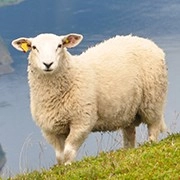Navratri Festival
Dear Lykkers! Navratri, a major Hindu festival, spans nine nights and celebrates the nine divine forms of Goddess Durga. Each night honors a unique aspect of the Goddess, making Navratri a festival of devotion, joy, and the triumph of good over evil.
Across India, people come together to pray, fast, dance, and embrace the spirit of the Goddess in their lives, drawing on her power and nurturing qualities.
The Spiritual Essence of Navratri:
Derived from the Sanskrit words "Nav" (nine) and "Ratri" (nights), Navratri is a time for spiritual renewal and cleansing. According to Hindu mythology, Navratri commemorates Goddess Durga's victory over the demon Mahishasura, a symbol of the triumph of virtue over vice. The festival unites devotees in celebration of strength, resilience, and purity, reflecting the essence of Durga herself.
Flowers Hold Significance in Indian Culture Than You Ever Imagined! Learn How to Choose the Right Flowers!
Discover spa havens, unwind and rejuvenate in the Great North's natural escapes.
Achieve radiant skin! Follow essential tips on cleansing, moisturizing, sunscreen, and hydration daily!
Discover the impact of modern machinery on farming: essential for increasing efficiency, easing labor, and boosting productivity.
When traveling by train, it’s important to know what items that are typically prohibited.
Ready for icy roads? Discover essential tips for safe driving, from slowing down to black ice prep!
The Nine Divine Forms of Goddess Durga:
Each day of Navratri is dedicated to worshiping a specific form of Durga, each with its own significance and blessings.
1. Shailaputri (Day 1): Representing strength and purity, Shailaputri, known as the "Daughter of the Mountains," is worshipped to bring balance and stability into life.
2. Brahmacharini (Day 2): This form embodies dedication and austerity, symbolizing Durga's life as an ascetic. Her blessings bring peace, perseverance, and devotion.
3. Chandraghanta (Day 3): Known for her courage, Chandraghanta removes suffering and instills bravery in her devotees.
4. Kushmanda (Day 4): Known for her radiant energy, Kushmanda is associated with health, vitality, and prosperity.
5. Skandamata (Day 5): As the mother of Lord Kartikeya, Skandamata embodies nurturing and growth, bringing wisdom and joy.
6. Katyayani (Day 6): Revered as a fierce warrior, Katyayani is worshipped for strength, health, and the elimination of obstacles.
7. Kalaratri (Day 7): Also known as Kali, this fierce form of the Goddess is worshipped to remove negativity and protect from evil.
8. Mahagauri (Day 8): Representing beauty and harmony, Mahagauri is worshipped for inner and outer refinement.
9. Siddhidatri (Day 9): The final form, Siddhidatri, brings knowledge, wisdom, and spiritual enlightenment.
What is Navratri ? | Why We Celebrate Navratri ? | #navratri #navratri2024
Video by LearnyDay
Navratri Traditions Across India:
The diversity of India is evident in the unique ways Navratri is celebrated across the country.
Gujarat: Known for its lively Garba and Dandiya Raas dances, Gujarat comes alive during Navratri as communities gather to dance around a ceremonial pot or idol of the Goddess.
West Bengal: Here, Navratri coincides with Durga Puja, a grand celebration with elaborate decorations, large idols of Durga, and feasting.
Maharashtra and Karnataka: In these states, families observe ritual fasting, hold gatherings, and perform traditional dances to honor the Goddess.
North India: Fasting, daily prayers, and the worship of young girls as symbols of purity and divinity are common practices.
Fasting and Food During Navratri:
Fasting is an important part of Navratri and is believed to promote physical and spiritual purification. During this period, people avoid grains, onions, garlic, and processed foods, focusing instead on wholesome ingredients like buckwheat flour, amaranth, fruits, and dairy. Popular Navratri dishes include:
Sabudana Khichdi: Made from tapioca pearls, this savory dish is a Navratri favorite.
Kuttu Ki Puri: These puris, made with buckwheat flour, are served with spiced potatoes or pumpkin.
Aloo Ka Halwa: A sweet, comforting dish made with potatoes, sugar, and ghee.
Dance and Devotion: Celebrating with Garba and Dandiya
Dance is a central part of Navratri celebrations, especially in Gujarat, where Garba and Dandiya bring people together in vibrant traditional attire. Women wear colorful chaniya cholis, while men don kediyus and turbans, filling the dance floors with the joyous energy of the festival.
Navratri is more than a festival; it's a time for spiritual reflection, community, and celebration. By honoring the nine forms of Durga, Navratri reminds us to embrace our inner strength, compassion, and resilience.
Through rituals, fasting, music, and dance, Navratri celebrates the many facets of Goddess Durga and the divine feminine power that resides within us all.

 · Lifestyle team
· Lifestyle team